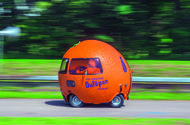Yes, it’s a monocoque, like an F1 car
In its 60 years of existence, the Mini has taken many forms to promote products. We drive the best known – one with true a-peel
Cars shaped as foodstuffs – there have been quite a few. We’ve had cars shaped like sausages, creme-filled chocolate eggs, cheese burgers, ice-cream cornets and even crayfish. But none of them has quite the charm of the Outspan orange Mini. Which, as the pictures on these pages show, is an outlandishly dimensioned citrus fruit on wheels.
There were originally half a dozen of these promotional spheres of influence. Designed and built by the Brian Thwaites company of Sussex between 1972 and 1974, they were used by South African orange producer Outspan to promote its fruits around Europe, and rather effectively so, one suspects. The company is still in business today, and at least three of the Oranges are known to survive, one still with Outspan. Minis were often hacked about and adapted in the 1960s and ’70s because they were cheap, because regulations were more relaxed and because the Mini’s mechanical layout lent itself to wild reconfigurings of the bodywork enveloping it.
The most iconic promotional cars ever built
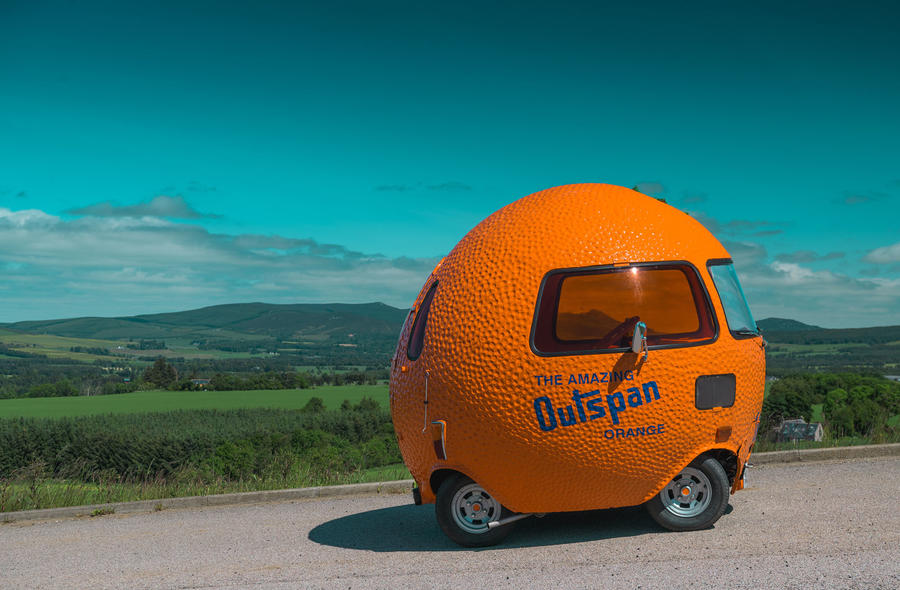
All of which has led us down some weird avenues of Minidom over the past 60 years. The Mini’s adaptability stems from the fact that its powertrain and suspension are carried on a pair of subframes whose position relative to one another can easily be shifted. That made it simpler for the British Motor Corporation to offer the longer-wheelbase Mini Countryman and Minivan, and not too difficult for assorted jokers to build devices such as the Mini Mini, which rides on a wheelbase short enough to house only two, or the Duckhams oil company to turn a Mini into a distinctly unstable-looking giant gallon can of 20-50.
The Outspan Mini was more ambitious than this, however, requiring the creation of sizeable moulds to produce a peel-textured monocoque complete with the green leaves of a stalk. Beneath this were stuffed the aforementioned subframes, the axles a mere 48in apart. Until some concrete ballast was added below the floor, this arrangement rendered the orange orb prone to performing impromptu forward rolls. The trigger for these gymnastics was the heft of the 848cc four-speed automatic powerpack, the A-series engine accessed via a lift-up lid cut into a dashboard stylishly surfaced with orange carpet. The carpet and its plywood substrate, incidentally, do a surprisingly good job of suppressing the Mini motor’s cheery threshings.
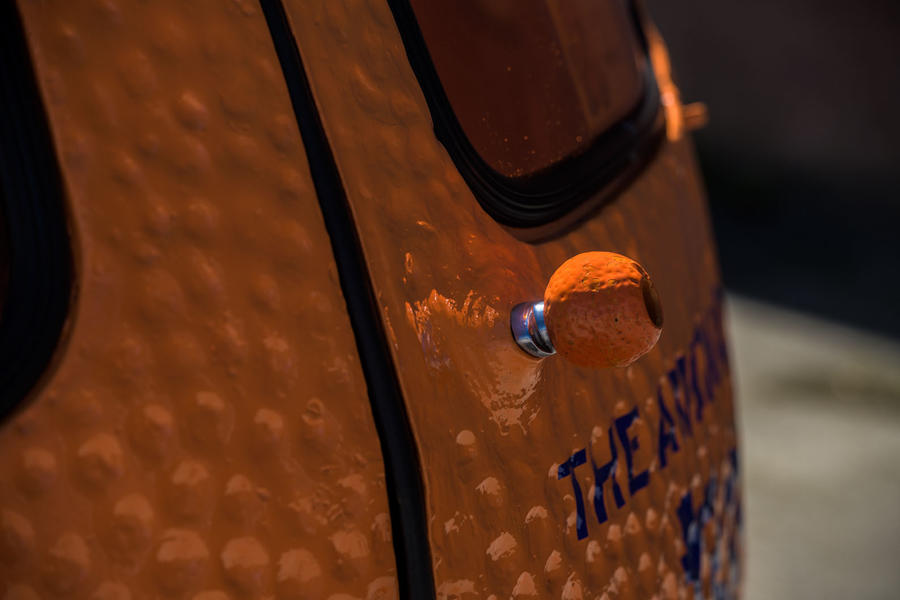
There’s only one door and it’s cut into the rear – its stay is a bent-wire hook of the kind used to secure garden gates – raising uncomfortable questions over how you might get out should an errant vehicle squeeze the Orange by smashing into it from behind. A rear-ender is less likely than an incursion into the Orange’s flanks, however. Its girth is slightly wider than that of a 7.5-tonne lorry, with huge curves of peel overhanging the dinky 10in wheels like the belly of a five-pints-a-night man.
Such juicy width allows the Orange to be almost sumptuously upholstered within, its ceiling and walls surfaced with deep-padded vinyl stitched to resemble fruit segments. The cabin ambience is of a teenage fantasy bedroom circa 1973. Sunset-hued bench seats are mounted beneath each of the generous side windows, and they’re broad enough to allow their occupants to lounge luxuriantly, unencumbered by seatbelts. The driver gets one, this mild reassurance being potential compensation for the fact that while your right leg lives in the tunnel-like footwell housing the accelerator and brake, your left must dangle from the seat into the central corridor that runs along much of the Orange’s floor.
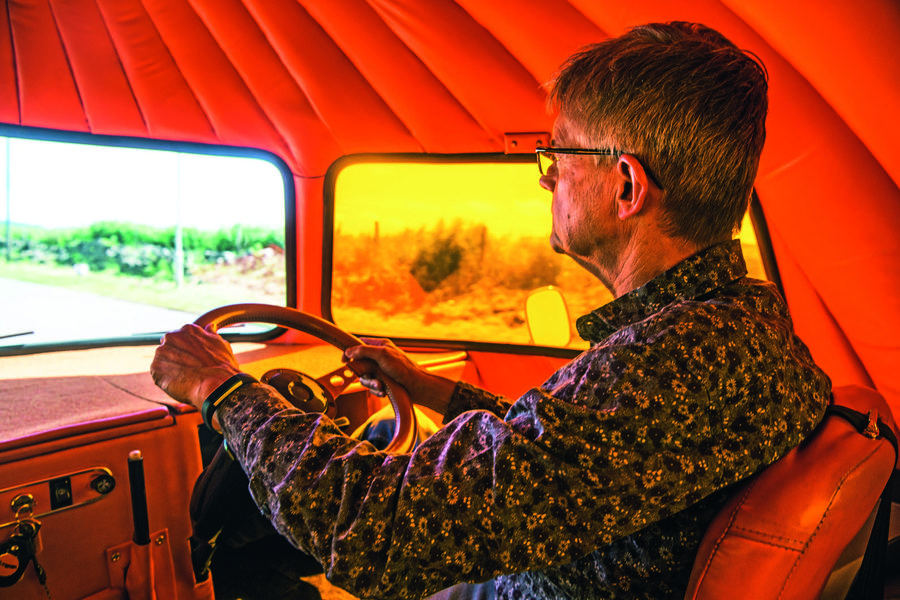
The weird driving position will nevertheless prove a lesser trouble should your journeying occur on a warm day. None of the windows open, the temperature within soon turning as hot as a harvest-ripening sun. There are a couple of vents, but they only dribble air when the Orange is in motion.
Speaking of motion, it’s a surprise to discover that the Orange corners with the quicksilver zest of a standard Mini, the steering instantly sharp and the tight-packed chassis unexpectedly resistant to understeer, at least at low speeds. With more ambitious pace – and 30-40mph feels ambitious in a globe with the head room to support top-hats – the Orange succumbs to corkscrew pitching that could quickly turn into a headline-grabbing incident. It’s easy to imagine the Orange toppling and rolling away, the tangerine orb advancing like a giant bowling ball attacking a cluster of skittles. It would be hard not to laugh, if painful for all occupants other than the belted driver, his fellow passengers flung around the padded cabin like socks in a tumble dryer.
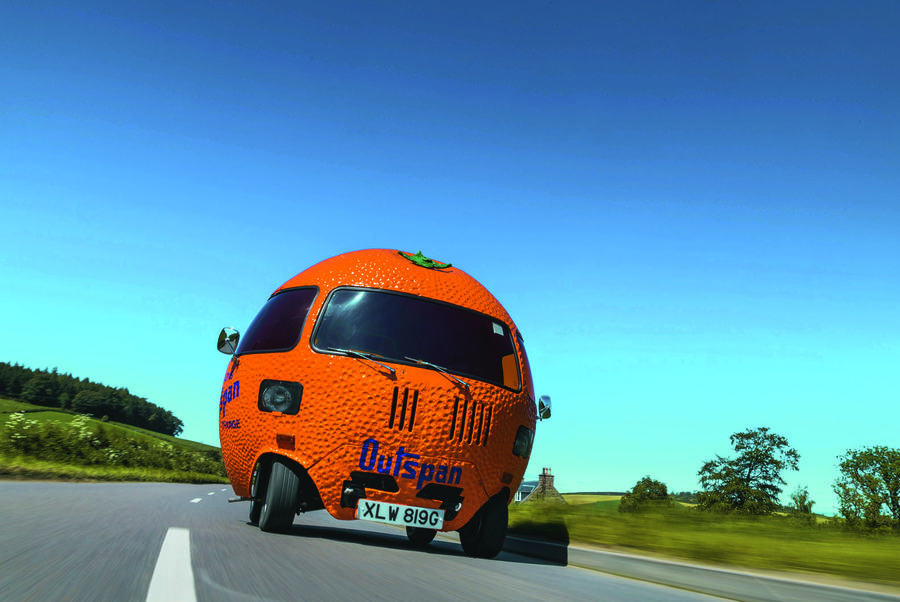
Happily, if not for onlookers in need of entertainment, this Orange remains upright at all times. Its womb-like orange world proves oddly soothing despite the threat of toppling and despite the pith-taking lack of pace. Much more than 40mph is pushing the juicer, 30mph decidedly wiser if you’re to continue enjoying the Orange’s charms.
Many of these emerge merely by staring at it. The more you look, the more thoughtfulness you see. There’s that green fibreglass stalk moulded into a depression in the Orange’s roof. Its rind suffers with heavy orange-peel – “it takes ages to wash because of the dimples”, says owner Sandy Delgarno, who displays the car at the Grampian Transport Museum – while a palm-filling glassfibre orange doubles as the door handle to the fruit’s psychedelic womb. The familiar brick-like tail-lights of a Mini hang jauntily from its rump, the headlights hide behind fairings and much of the glass is orange tinted. That once included the windscreen, but the law no longer allows the driver a more optimistically hued view of the world. Never mind. No car I’ve ever driven has triggered so many smiles, so many looks of startlement, so many fumblings for smartphones and so many thumbs-up for every mile driven. It’s the ultimate orange sales aid.
More edible motoring treats to savour
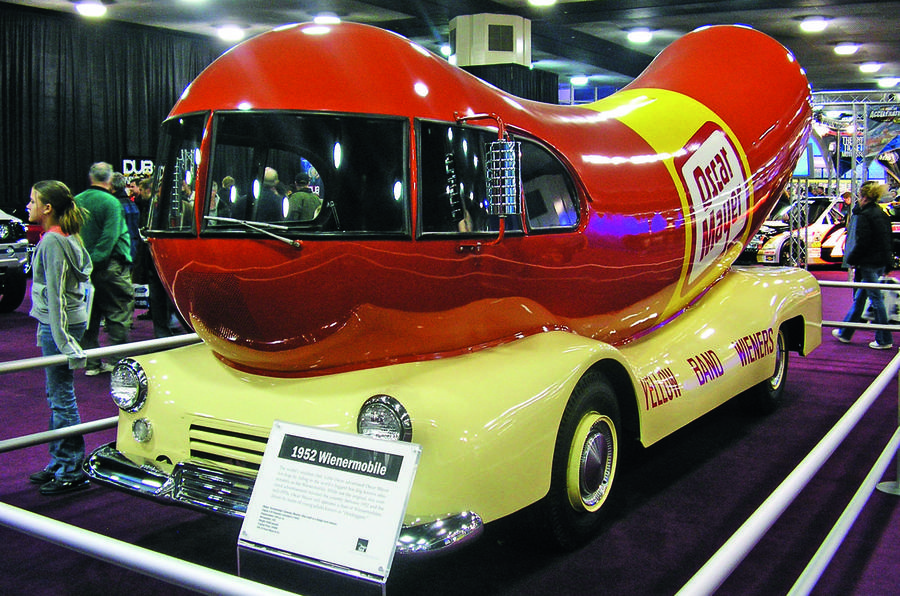
Wienermobile: There’s more than one of these grimly obscene-looking machines, the first of them extruded in 1936 by the US’s Oscar Mayer sausage company. Wienermobiles are well enough known to have their own Wikipedia entry. Drivers are recruited from university and known, possibly unfortunately these days, as Hotdoggers. Vehicles sacrificed for the sizzling task range from a Willys Jeep to V8-powered trucks and, most recently, the Mini Cooper S.

Cadbury’s Creme Egg car: Rather more durable and decidedly less munchable than the chocolate product it advertises, the Creme Egg car was commissioned by Cadbury-Schweppes in the late 1980s. It is based on a Bedford Rascal van and five were built, their ovoid forms resembling a less healthy version of the Outspan Mini. Corgi Toys makes a model of the car that, slightly disappointingly, proves inedible.

Cheeseburger car: This unappetising wheeled burger is to be found in Kansas City, promoting the bap-bracketed food medley that awaits you within the Westport Flea Market, should your cravings remain undimmed. Should that be the case, your five-patty burger awaits, floating in an ocean of chips and with no mention of a defibrillator side order.
Read more
The most iconic promotional cars ever built
Mini at 60: its greatest spin-off models
The 10 best used Minis you can buy
Source: Autocar
